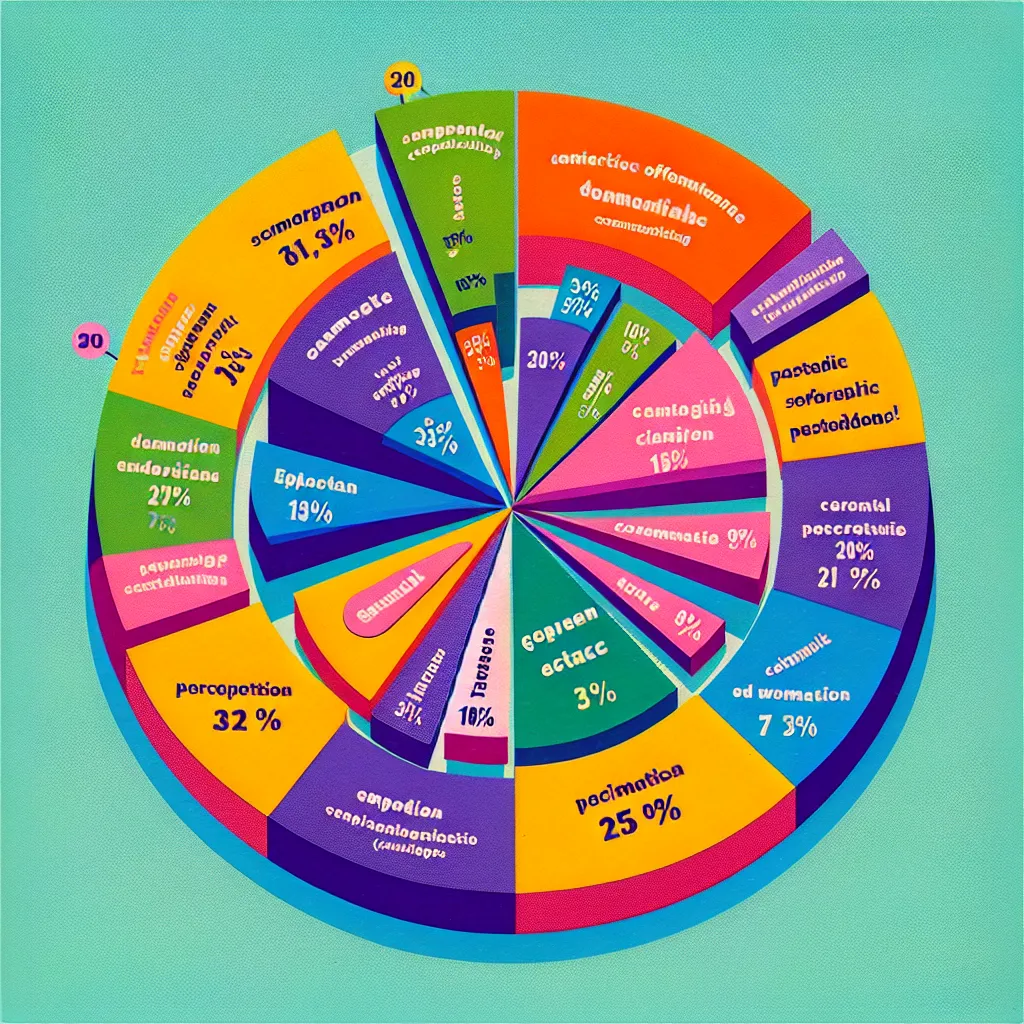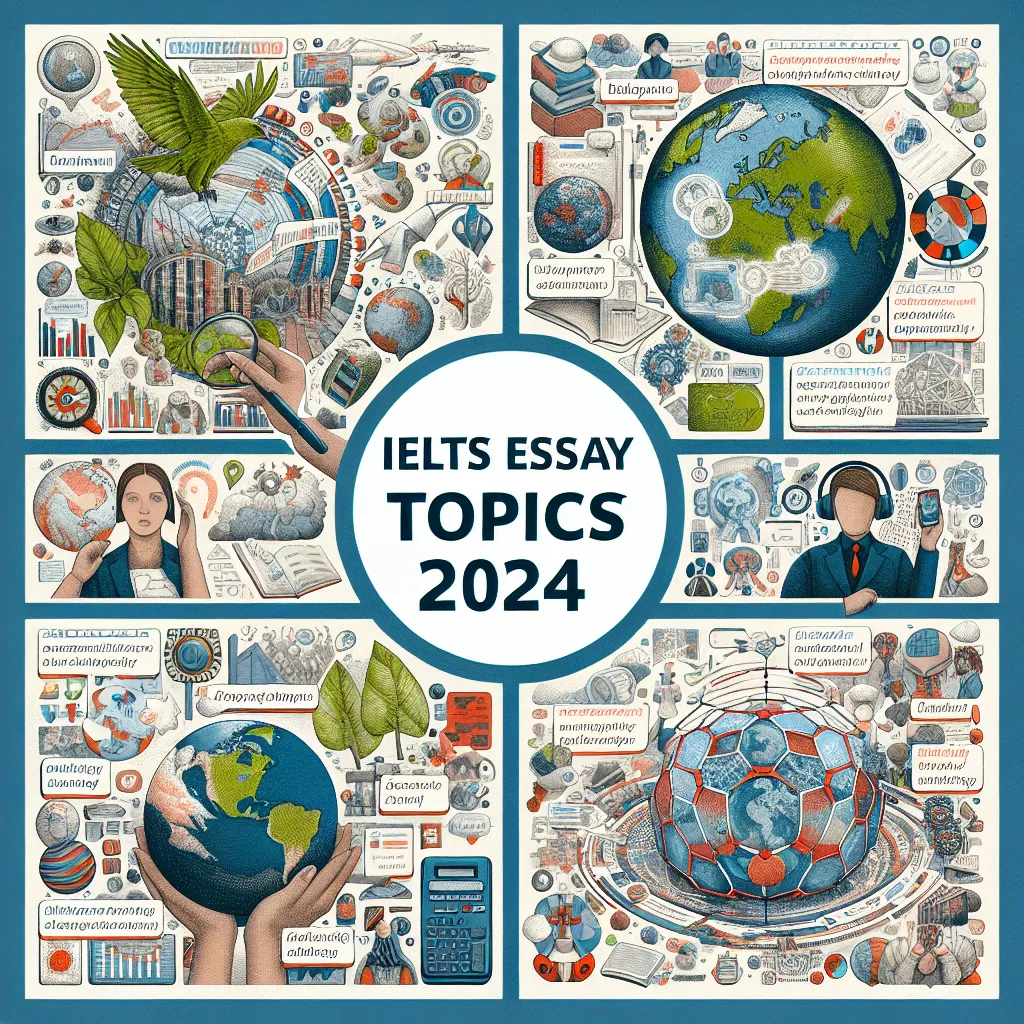Are you preparing for the IELTS exam and feeling overwhelmed by pie chart questions in Writing Task 1? Don’t worry! This comprehensive guide will walk you through the process of tackling pie chart questions effectively, helping you boost your score and confidence.
Understanding Pie Charts in IELTS Writing Task 1
Pie charts are circular diagrams divided into sectors, each representing a proportion of the whole. In IELTS Writing Task 1, you may encounter one or more pie charts, often comparing data across different time periods or categories.
 IELTS Pie Chart Example
IELTS Pie Chart Example
Why Pie Charts Matter in IELTS
Pie charts are essential in IELTS Writing Task 1 because they:
- Test your ability to interpret visual data
- Assess your skills in comparing and contrasting information
- Evaluate your capacity to describe proportions and percentages accurately
Step-by-Step Approach to Pie Chart Questions
1. Analyze the Question
Before diving into writing, carefully examine the question and pie chart(s):
- Identify the topic and time period(s)
- Note the number of pie charts (single or multiple)
- Observe any significant differences or similarities between charts
2. Plan Your Response
Organize your answer using this structure:
- Introduction: Summarize the main features of the pie chart(s)
- Overview: Highlight 2-3 key trends or main features
- Body Paragraph 1: Discuss the largest sectors and significant data
- Body Paragraph 2: Compare and contrast data (if multiple charts)
3. Write a Clear Introduction
Your introduction should:
- Paraphrase the question
- Mention the type of chart and what it shows
Example:
“The pie charts illustrate the primary reasons for travel in the UK in 1994 and 2009.”
4. Provide an Overview
Highlight the most important features:
- Identify the largest and smallest sectors
- Note any significant changes or trends
Example:
“Overall, while leisure remained the dominant reason for travel in both years, there was a notable increase in business travel and a decrease in visiting friends and relatives between 1994 and 2009.”
5. Describe Specific Data
In your body paragraphs:
- Start with the largest sectors
- Use precise language to describe proportions
- Compare and contrast data if there are multiple charts
Example:
“In 1994, leisure accounted for the largest proportion of travel at 50%, followed by visiting friends and relatives at 30%. Business travel represented only 20% of the total. However, by 2009, while leisure still dominated at 45%, business travel had increased significantly to 30%, overtaking visits to friends and relatives, which dropped to 25%.”
6. Use Appropriate Language
Employ a variety of phrases to describe percentages and proportions:
- “accounted for”
- “represented”
- “constituted”
- “made up”
- “comprised”
7. Avoid Common Mistakes
- Don’t list all the percentages without analysis
- Refrain from introducing personal opinions or external information
- Ensure your numbers add up to 100% when describing a whole pie chart
Key Vocabulary for Pie Chart Descriptions
To enhance your writing, use these terms:
- Sector
- Segment
- Slice
- Proportion
- Percentage
- Fraction
- Majority
- Minority
- Predominant
- Negligible
 IELTS Pie Chart Vocabulary
IELTS Pie Chart Vocabulary
Practice Techniques
To improve your pie chart description skills:
- Analyze real IELTS pie chart questions regularly
- Time yourself while practicing (aim for 20 minutes)
- Compare your answers with model responses
- Focus on improving your weak areas (e.g., vocabulary, data interpretation)
Conclusion
Mastering pie chart questions in IELTS Writing Task 1 requires practice and a systematic approach. By following this guide, you’ll be well-equipped to tackle any pie chart question confidently. Remember to analyze the data carefully, use appropriate language, and structure your response clearly. With consistent practice, you’ll see significant improvement in your IELTS Writing Task 1 performance.
[internal_links]
For more tips on IELTS preparation, check out our guides on IELTS Reading strategies and IELTS Speaking improvement techniques.
[/internal_links]
Keep practicing, and good luck with your IELTS preparation!




